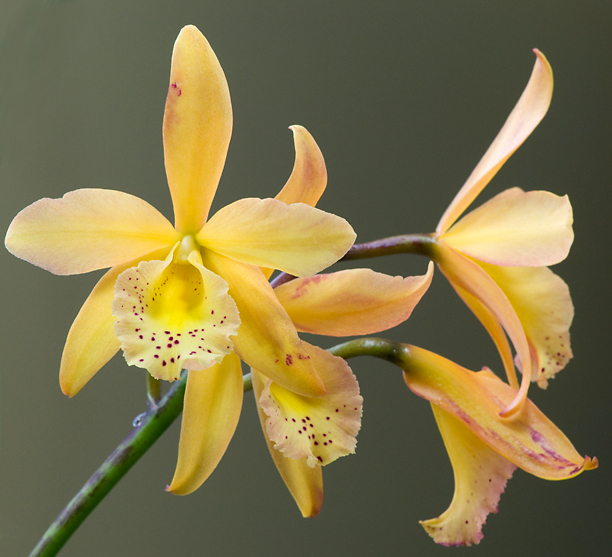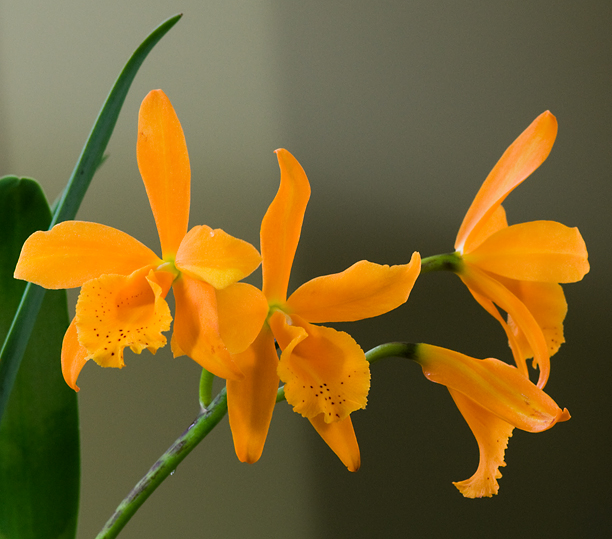You are using an out of date browser. It may not display this or other websites correctly.
You should upgrade or use an alternative browser.
You should upgrade or use an alternative browser.
Cahuzacara Lucerito de Oro ‘Bullion’
- Thread starter Erythrone
- Start date

Help Support Slippertalk Orchid Forum:
This site may earn a commission from merchant affiliate
links, including eBay, Amazon, and others.
Sorry for the title... can anybody change it by removing the I an/I?
NYEric
Well-Known Member
Interesting, thx for sharing.
bullsie
Well-Known Member
Beautiful! What is Cahuzacara?
SlipperFan
Addicted
Done.Sorry for the title... can anybody change it by removing the I an/I?
Sweet flower. Please post a photo when the flowers darken. I like the color now, and it will be interesting to see how they change.
Some sort of EpiCatt I think.
Nice cheery flower.
Nice cheery flower.
It was a Brassolaeliocattleya....
Cahuzacara is (B x C x Gur x Rl)
Brassavola, Cattleya, Guarianthe and Rhyncholaelia
Cahuzacara is (B x C x Gur x Rl)
Brassavola, Cattleya, Guarianthe and Rhyncholaelia
Done.
Thanks Dot!
bullsie
Well-Known Member
I love when I know what it is! Thanks for clarifying the name.
Where do the spots come from?
Cant work it out from the parentage.
Cant work it out from the parentage.
G
Ghosthunt64
Guest
For some reason the name suits it perfectly; and I love the colors. And the flowers are round, but without being flawless circles. Fantastic.
Where do the spots come from?
Cant work it out from the parentage.
I think the spots are from Guarianthe aurantiaca
PaphMadMan
phytomanic
Guarianthe aurantiaca may contribute to spotting I suppose, but it really looks very much like the always spotted Bc. Richard Mueller parent (B. nodosa x C. milleri), which also accounts for the color-change flowers.
You are right PaphMadMan. I just took a look at some pictures of Bc. Richard Mueller. The plants of that grex bear spotted flowers. But I don't understand why they are spotted since B. nodosa and C. milleri are not. Genetics is sometimes so diffucult to undersand!
PaphMadMan
phytomanic
You are right PaphMadMan. I just took a look at some pictures of Bc. Richard Mueller. The plants of that grex bear spotted flowers. But I don't understand why they are spotted since B. nodosa and C. milleri are not. Genetics is sometimes so diffucult to undersand!
I think if you look at enough close-ups of Brassavola nodosa flowers you will see some clones have a little spotting in the throat, or from the side you may see spotting on the sides of the lip near the base, way back from the heart shaped end of the lip. And if you look at nodosa hybrids you will find a lot of spotted or otherwise patterned lips when the other parent has a solid color lip. The genes for spotting are there, just not evident in a flower where color is suppressed to give a white flower for nocturnal pollinators. When the other parent brings color into the mix the party starts.
eteson
Phragmad
Totally agree with you. nodosa primary hybrids are very often spotted.
Thanks, all. Great explanation for the spotting. I never realized nodosa had some spotting.
Carkin
Well-Known Member
Love it!!! I have this one too! But as usual it still hasn't bloomed for me 
I think if you look at enough close-ups of Brassavola nodosa flowers you will see some clones have a little spotting in the throat, or from the side you may see spotting on the sides of the lip near the base, way back from the heart shaped end of the lip. And if you look at nodosa hybrids you will find a lot of spotted or otherwise patterned lips when the other parent has a solid color lip. The genes for spotting are there, just not evident in a flower where color is suppressed to give a white flower for nocturnal pollinators. When the other parent brings color into the mix the party starts.
Thanks for the explanation!
Similar threads
- Replies
- 13
- Views
- 1K
- Replies
- 17
- Views
- 939
- Replies
- 28
- Views
- 2K
- Replies
- 12
- Views
- 1K




